Disposable Plaque-Removal System
Effective bonding requires the prior removal of any plaque or pellicle from the enamel surface. In rebonding a loose or broken bracket, residual composite must also be removed before prophylaxis. Until recently, we used a high-speed handpiece with a fluted composite finishing bur to remove residual composite, followed by a slow-speed rotary handpiece with a brush or rubber cup and fine flour of pumice to remove the smear layer and plaque.
Our infection-control procedures include the sterilization of high-speed handpieces between patients and the use of disposable prophy angles with slow-speed handpieces. This required the purchase of an autoclave, since dry-heat sterilization cannot be used for handpieces, and it also necessitated time-consuming pre- and post-sterilization cleaning and lubrication of the handpieces. We had to be sure that all lubricant was expelled from each handpiece to avoid spraying oil on a patient's teeth. In addition, the handpieces had to be bagged to maintain sterility until ready for use.
Similar articles from the archive:
- Microabrasion Technique for Treatment of Demineralization after Debonding December 2012
- New Antiplaque Agent for Orthodontic Patients March 1985
- Hygiene and the Orthodontic Patient August 1999
The disposable prophy angles are convenient and are sealed to prevent cross-contamination, but they are relatively expensive. This prophylaxis procedure is also expensive in terms of doctor time--at least in Texas, where assistants are not allowed to use rotary handpieces.
We have now developed a simple method of composite and plaque removal that does not require the use of a handpiece, eliminates the risk of cross-contamination, can be delegated to an assistant, and is inexpensive to implement.
Procedure
Dispense a small amount of flour of pumice into a paper coin envelope (Fig. 1). Cut a wooden, cotton-tipped applicator to a length of about 2½'' and insert it, cotton tip first, into the envelope (Fig. 2). Moisten the flap with a sponge, and seal the envelope (Fig. 3). These envelopes can be prepared ahead of time and stored in chairside cabinets.
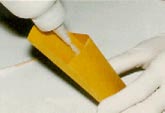
Fig. 1 Small amount of flour of pumice dispensed into paper coin envelope.
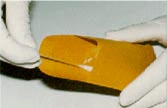
Fig. 2 Cotton-tipped applicator inserted into envelope, cotton tip first.
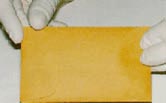
Fig. 3 Envelope flap moistened with sponge and sealed until ready for use.
When a patient presents with a loose bracket, any residual composite is removed from the enamel with a composite removal plier*. The assistant then tears off the top of a prepared coin envelope and dispenses a small amount of water into the envelope with an air/water syringe (Fig. 4). The cotton-tipped applicator is used to stir the flour and water into a slurry.
Plaque and pellicle are removed from the tooth to be rebonded by scrubbing the enamel surface with the pumice-coated applicator (Fig. 5). A new bracket is bonded in place, and the envelope and applicator are thrown away.
Conclusion
We have found this procedure to be fast, effective, and inexpensive. Handpieces are now reserved for full bondings and debondings.
If a manufacturer could develop an applicator tip made of a material that would not shred when used on multiple teeth, and could package the system in a see-through sterile packet (so it could be checked before opening to make sure there was pumice in the bottom), this method could be used for full bondings. If the cost were low enough, such a system would be even more economical and would eliminate the need to prepare the paper envelopes.
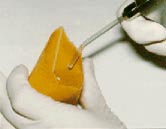
Fig. 4 Small amount of water dispensed into open envelope, and applicator used to stir pumice and water.
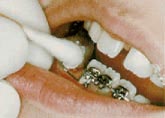
Fig. 5 Plaque and pellicle removed from tooth to be rebonded with pumice-coated applicator.




COMMENTS
.